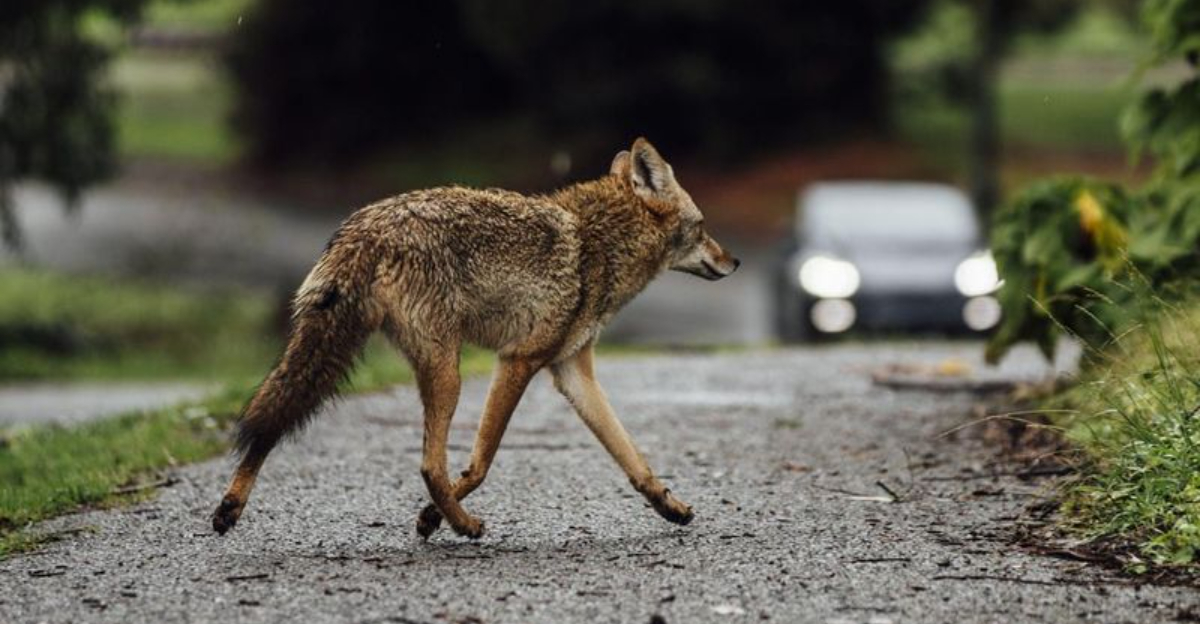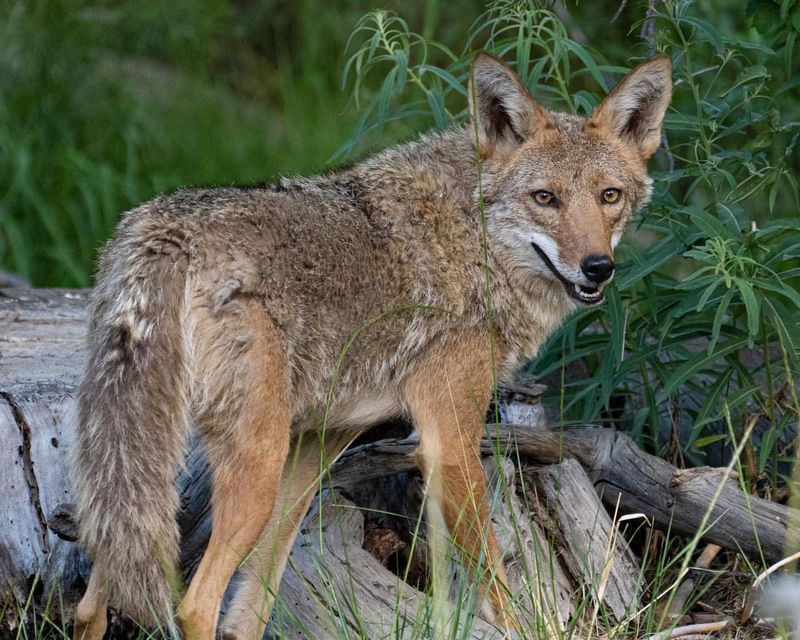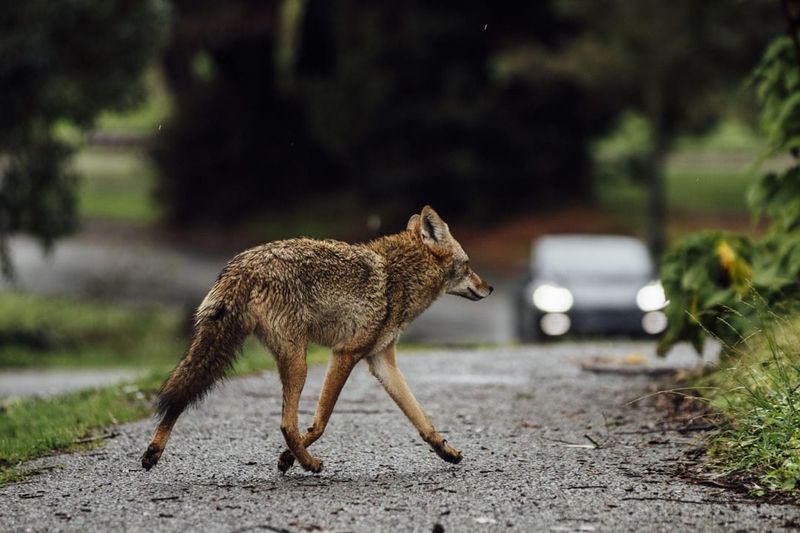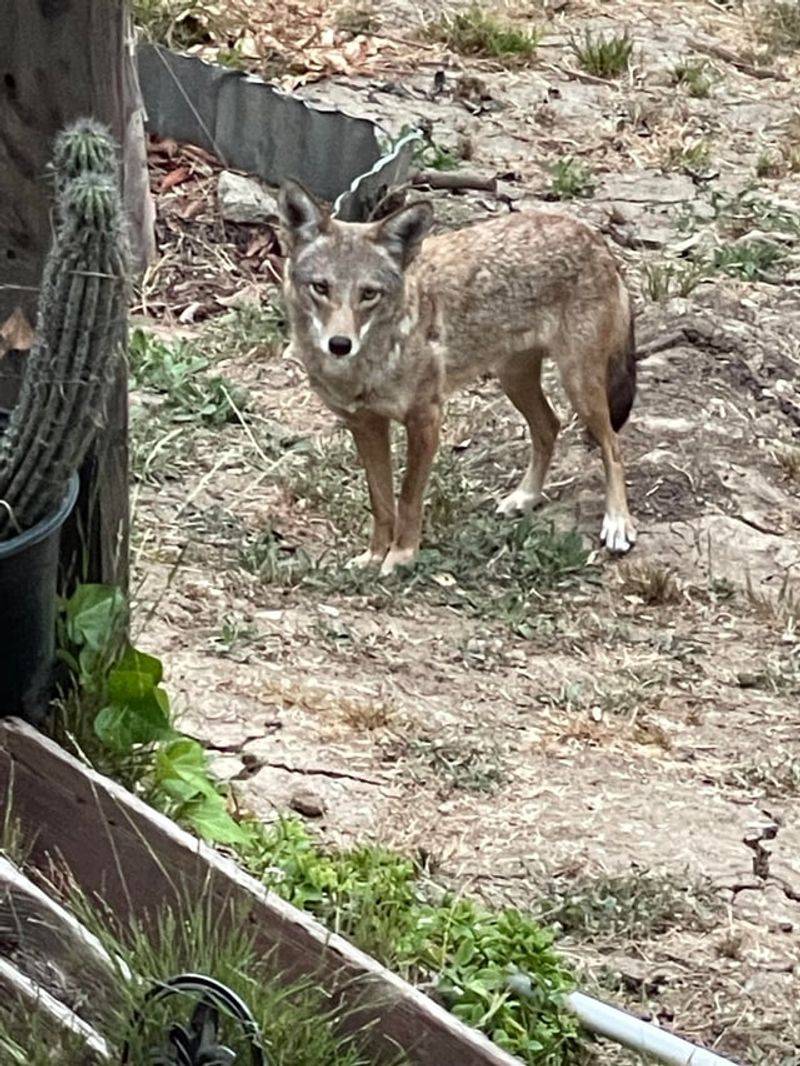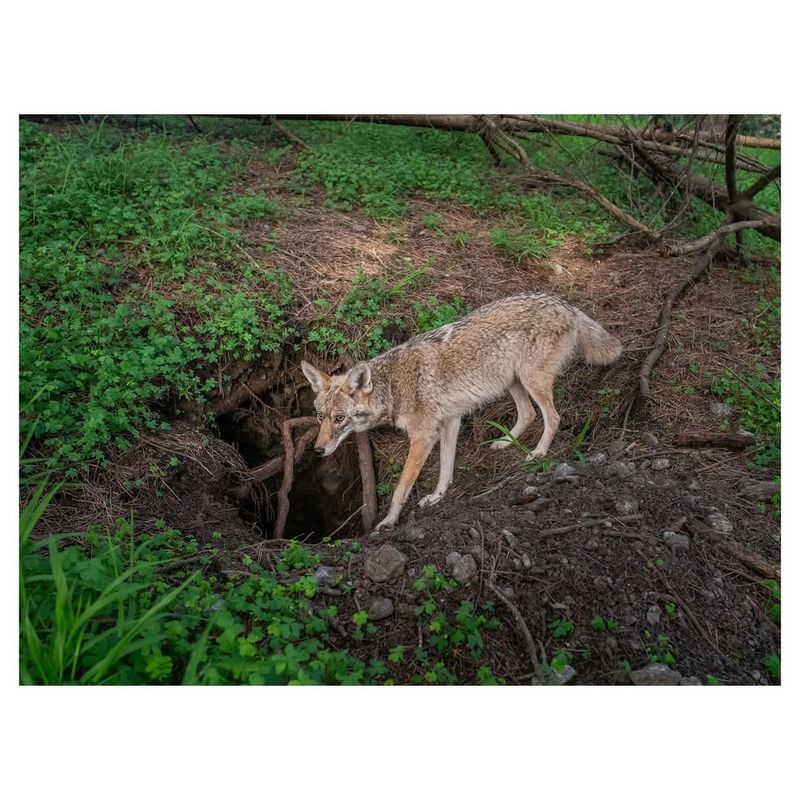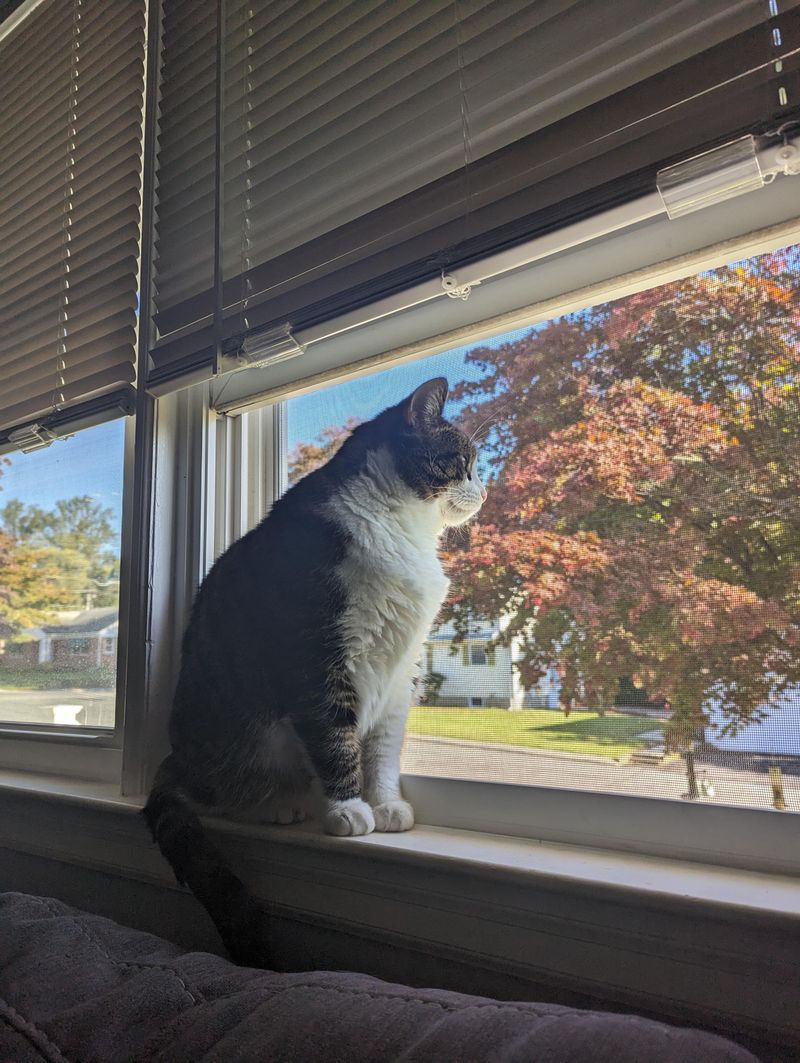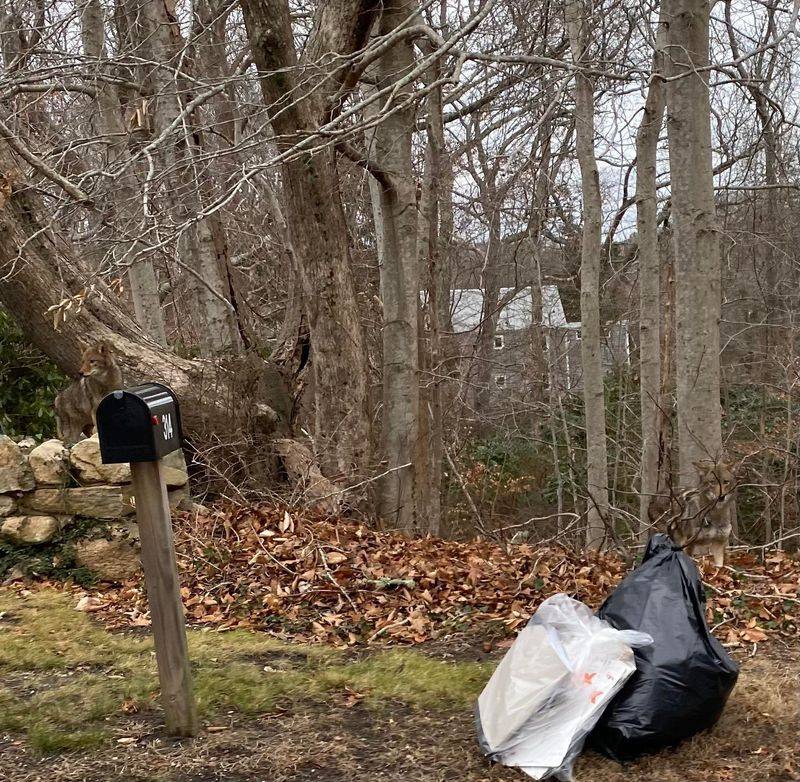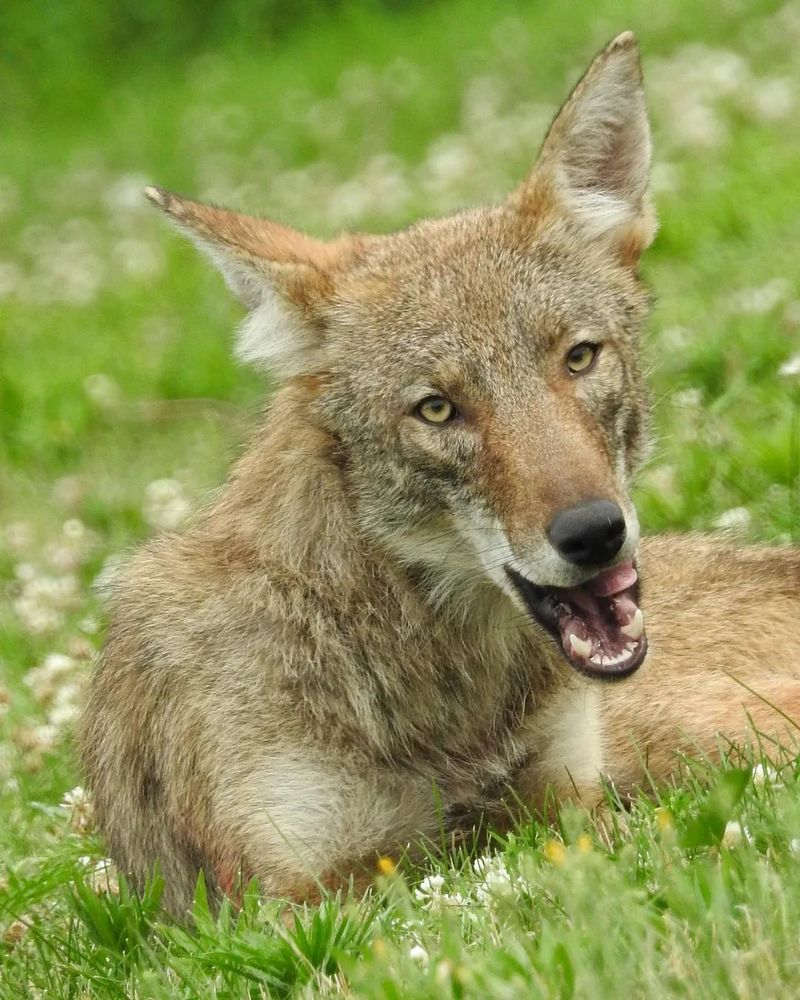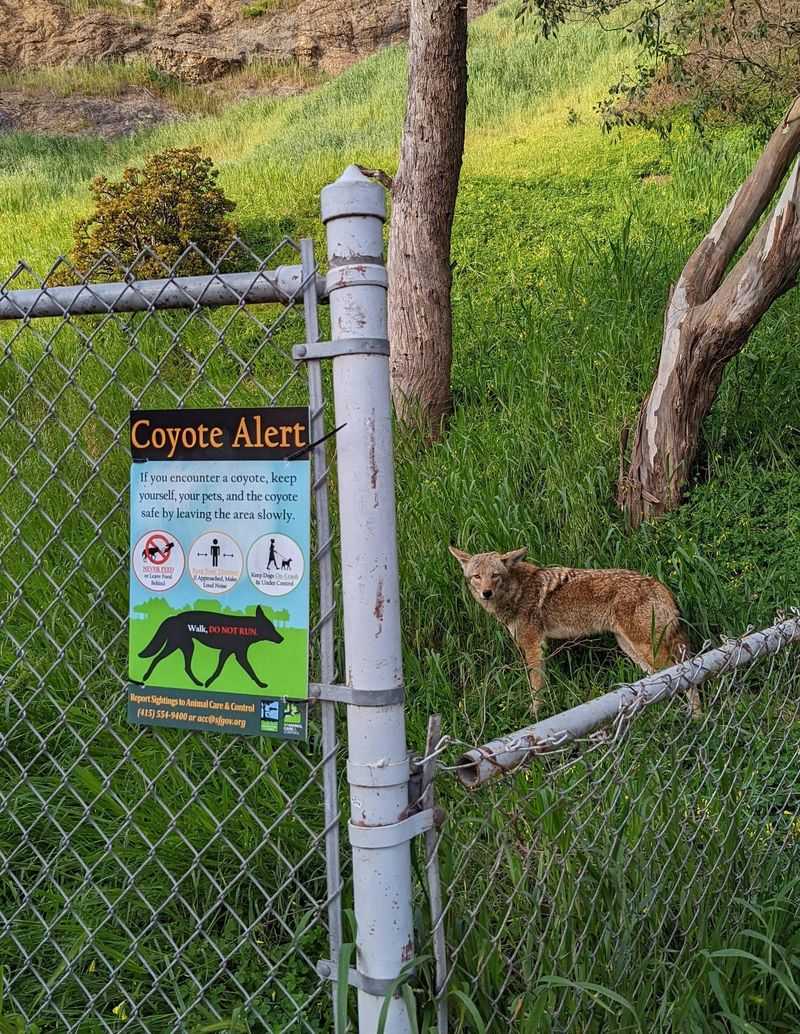A sudden glimpse of a coyote in your yard can jolt your nerves and spark a dozen questions at once.
Calm thinking matters, because this wary predator often reacts to your next move.
Some choices keep the situation under control, while others open the door to unnecessary danger.
With the right approach, you can guide the animal away, protect your space, and avoid the missteps that turn a routine encounter into real trouble.
Make Yourself Look Big And Intimidating
Standing tall and spreading your arms wide sends a clear message to the coyote that you are not prey.
Wave your jacket or shirt above your head to increase your size even more.
Coyotes naturally avoid animals that appear threatening or larger than themselves.
This instinctive fear helps keep them at a safe distance from you.
Combining this posture with loud noises creates an even stronger deterrent, making the animal think twice about approaching closer to your home.
Use Loud Noises To Scare It Away
Yelling, clapping, or banging pots together creates sudden sounds that startle coyotes and encourage them to leave quickly.
These animals prefer quiet environments where they can hunt without disturbance.
Keeping a whistle or air horn near your back door gives you an instant tool for making noise.
Even shaking a can filled with coins works surprisingly well.
Consistent noise-making teaches coyotes that your Florida yard is not a safe or welcoming place for them to visit again.
Maintain Eye Contact Without Staring Aggressively
Keeping your eyes on the coyote lets you monitor its movements while showing confidence.
However, avoid intense staring, which some animals interpret as a direct challenge or threat.
Glancing away briefly while staying aware prevents the encounter from escalating into aggression.
Balance is key when dealing with wild creatures.
Never turn your back completely or run away, as this can trigger the coyote’s natural chase instinct and create a more dangerous situation for everyone involved.
Back Away Slowly While Facing The Animal
Moving backward at a steady pace allows you to create distance without triggering a chase response.
Quick movements or running can make the coyote think you are prey fleeing from danger.
Keep your body oriented toward the animal so you can watch what it does next.
Side-stepping works too if you need to reach your door.
Give the coyote plenty of space to escape in another direction, as trapped animals often become more defensive and unpredictable in their behavior.
Bring Pets And Small Children Inside Immediately
Small dogs, cats, and young kids can appear as easy targets to hungry coyotes looking for a meal.
Getting them indoors removes the temptation and eliminates potential danger fast.
Coyotes have been known to jump fences or approach pets on leashes, especially during dawn and dusk hours.
Supervision outdoors in Florida is absolutely essential in areas where coyotes roam.
Teaching children to recognize coyotes and know what to do helps them stay calm and respond correctly if they ever encounter one alone.
Remove Food Sources That Attract Coyotes
Pet food left outside, unsecured garbage bins, and fallen fruit from trees all invite coyotes to visit your property regularly.
Once they find easy meals, they will return night after night.
Feeding pets indoors and using tight lids on trash cans eliminates these attractions.
Bird feeders also draw rodents, which in turn attract hungry coyotes searching for prey.
Keeping your Florida yard clean and free of food scraps makes it far less appealing to wildlife looking for convenient dining options near human homes.
Never Approach Or Try To Feed The Coyote
Getting closer to a wild coyote puts you at serious risk of bites, scratches, or disease transmission like rabies.
These animals are not pets and can become aggressive when they feel threatened or cornered.
Feeding coyotes teaches them to associate humans with food, which removes their natural fear.
This behavior leads to bolder encounters and increases danger for entire neighborhoods.
Wildlife experts warn that fed coyotes often become problem animals that must be relocated or euthanized, making feeding them harmful to the animals themselves.
Do Not Turn Your Back And Run Away
Running triggers a coyote’s predator instincts, causing it to chase you like it would chase rabbits or other prey animals.
This reaction happens automatically and can turn a calm situation dangerous instantly.
Even if you feel scared, staying calm and moving slowly gives you better control over the encounter.
Panic often leads to poor decisions that escalate risk.
Remember that coyotes typically avoid confrontation with humans when given the chance, so giving them space and acting confidently usually resolves the situation peacefully and safely.
Never Leave Small Pets Unattended Outside
Coyotes view small pets as potential prey, especially during early morning and evening hours when they hunt most actively.
Attacks happen quickly, often before owners realize danger is present.
Even fenced yards do not guarantee safety, as coyotes can jump surprisingly high or dig under barriers. C
onstant supervision or keeping pets indoors during peak coyote activity times provides the best protection.
Many Florida pet owners have learned this lesson the hard way, losing beloved animals to preventable attacks that happened in just seconds of unsupervised outdoor time.

